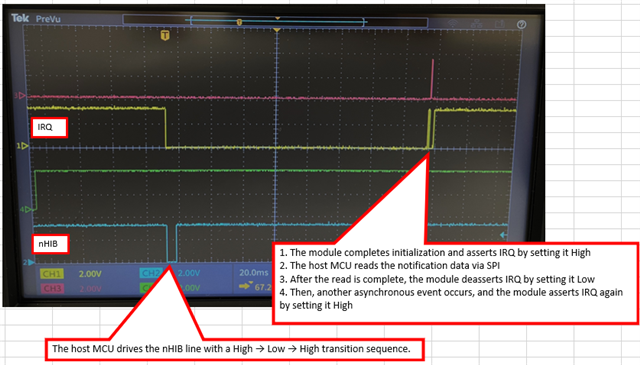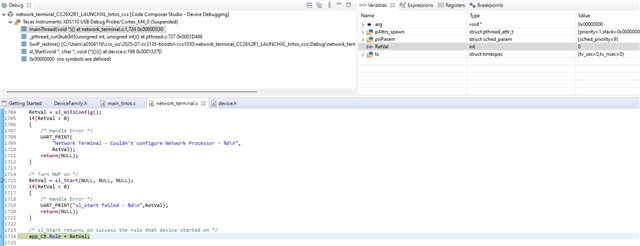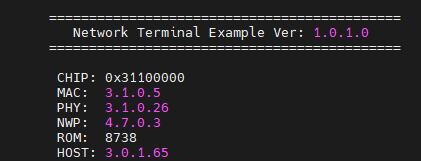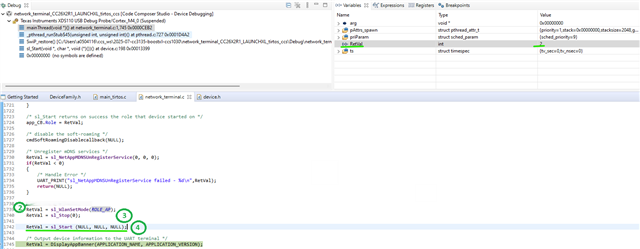Other Parts Discussed in Thread: CC3135, MSP430FR2355, CC3100SDK, SIMPLELINK-WIFI-CC3120-SDK-PLUGIN, CC3301MOD, CC3351MOD, CC3135MOD, CC3551E, MSP-EXP432E401Y
Tool/software:
Hello,
I followed the steps below to switch the device to AP mode, but the return value at step ④ was not as expected.
-
sl_Start(NULL, NULL, NULL);→ Return:ROLE_UNKNOWN (1) -
sl_WlanSetMode(ROLE_AP);→ Return:0(Success) -
sl_Stop(0);→ Return:0(Success) -
sl_Start(NULL, NULL, NULL);→ Return:ROLE_UNKNOWN (1)← Expected:ROLE_AP (2)
Despite the unexpected return value in step ④, the SSID "mysimplelink-xxxxxx" appears on my PC's Wi-Fi list, which suggests that the device is operating in AP mode.
Is it possible for sl_Start(NULL, NULL, NULL) to return ROLE_UNKNOWN even though the device has been correctly configured to AP mode?
Any insights or suggestions would be greatly appreciated.
Best regards,
Shuichi Marutani





